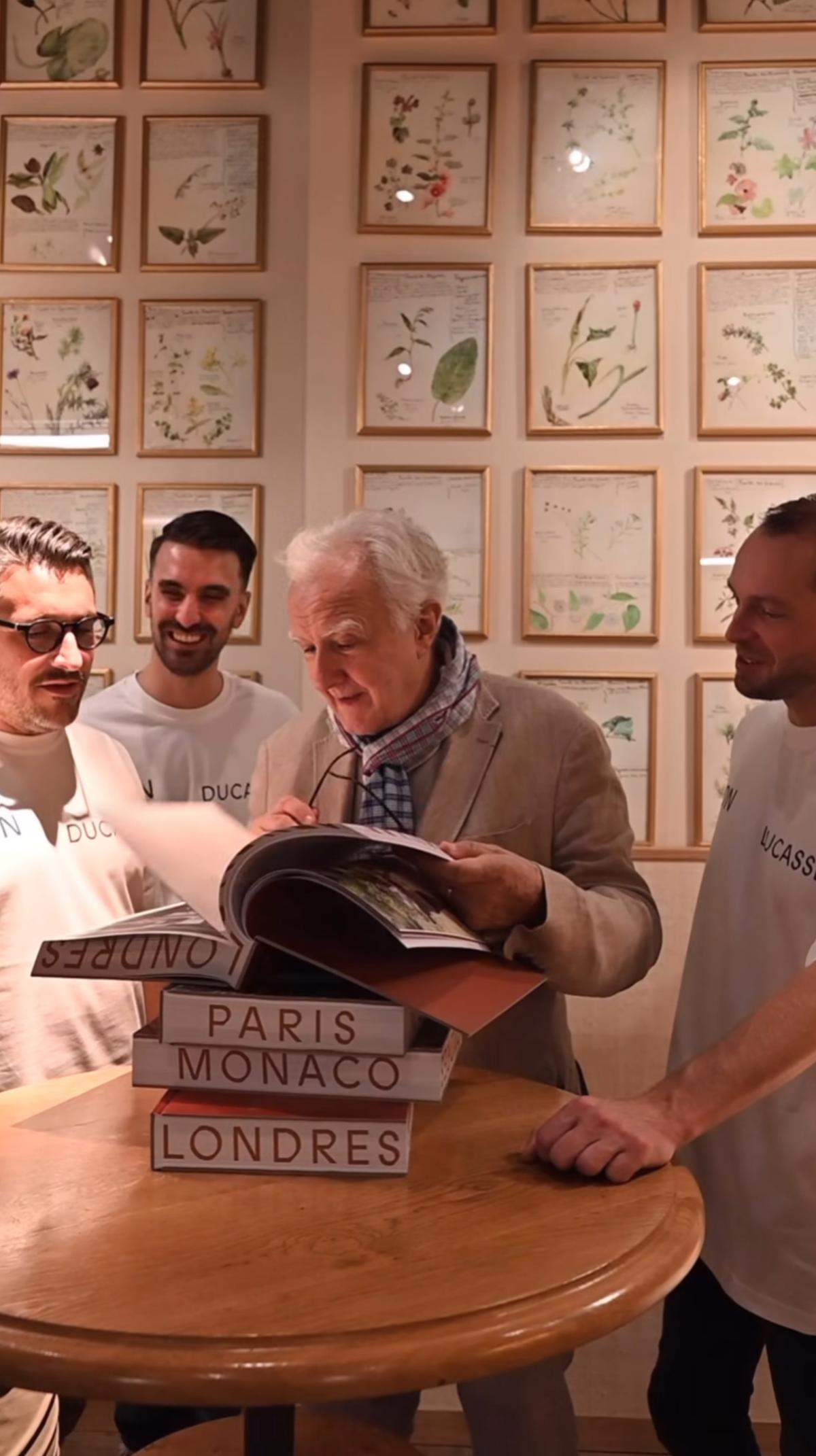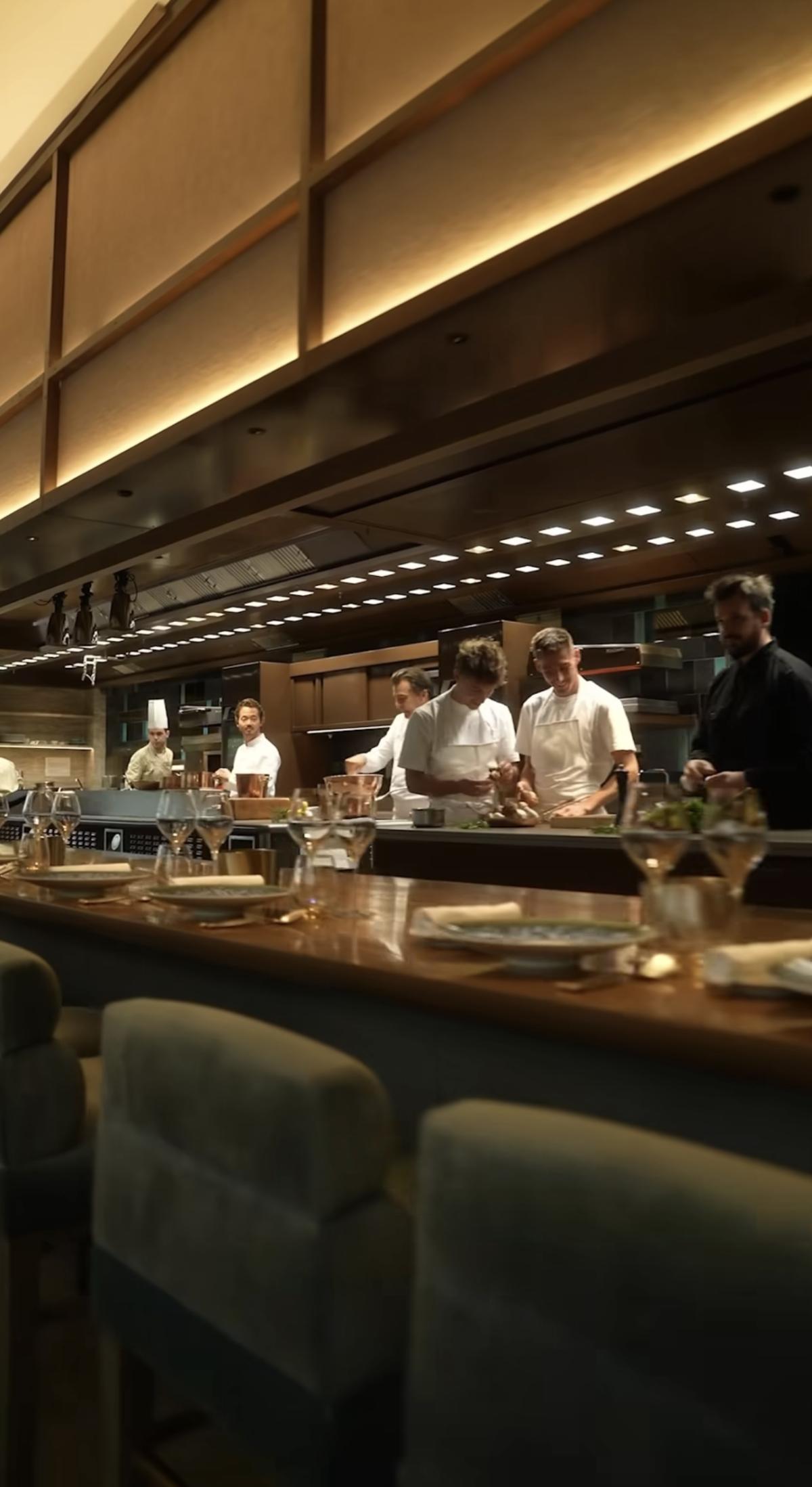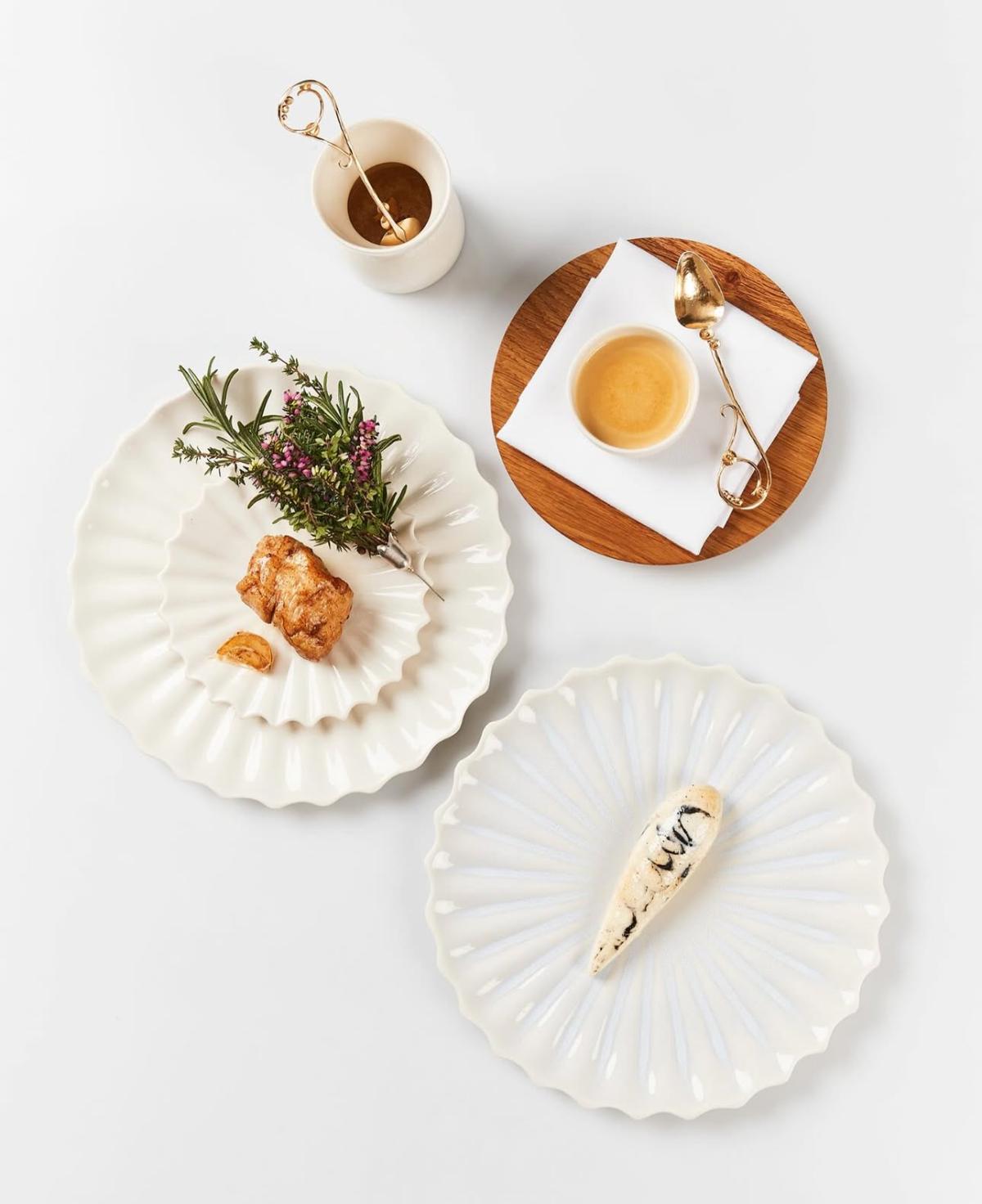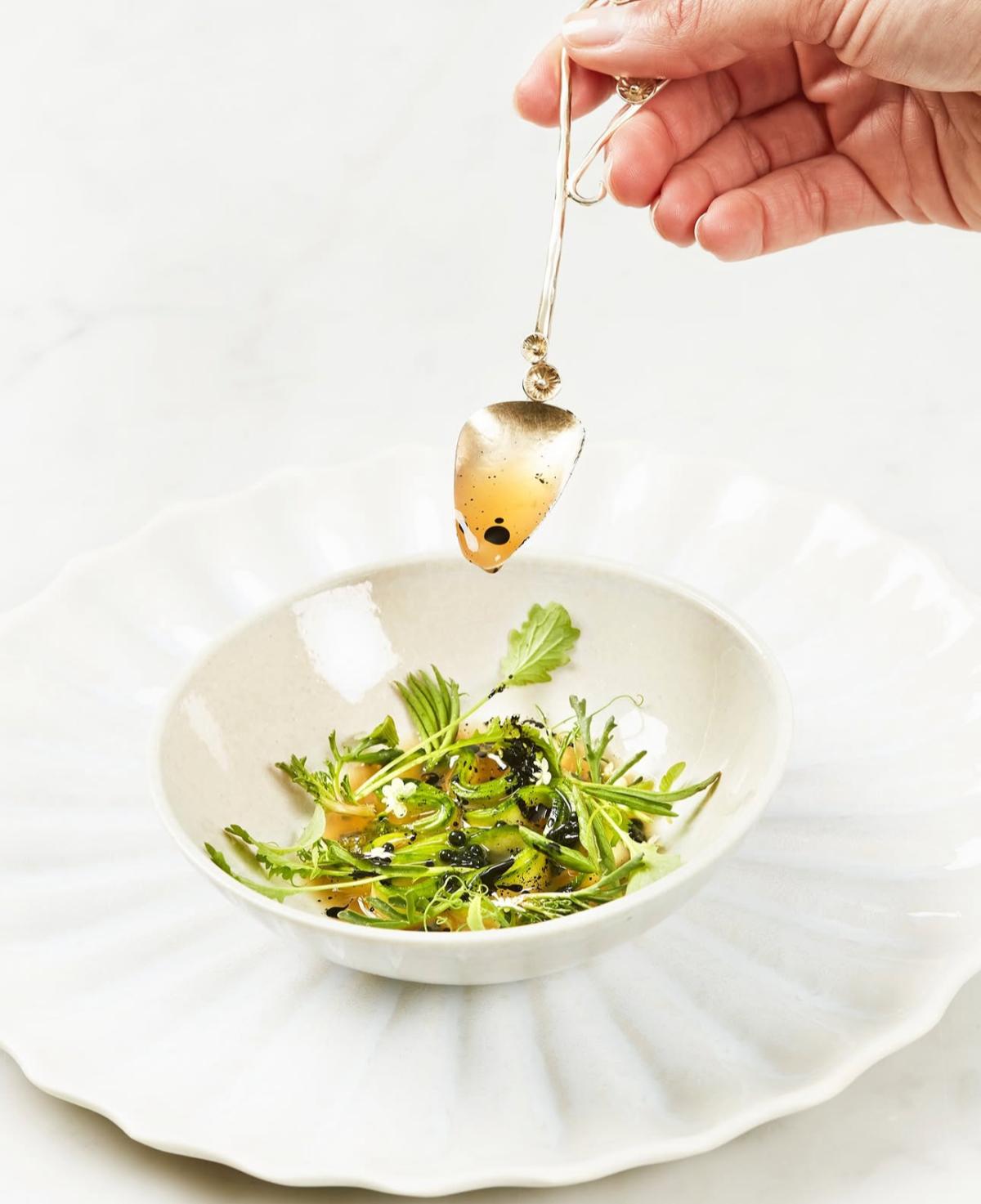





The first bite is almost silent. It doesn’t crunch - it melts — carrying a whisper of smoke, citrus, and memory. The plate — a white arc of porcelain worthy of a gallery wall — seems to vanish beneath the grace of the colours and textures within it. In that instant, you realize this isn’t about satisfying hunger - it’s about attention to every detail and to the experience itself. To dine at the highest level — in Paris, Tokyo, Copenhagen, or New York — is to take part in a theater without borders or time. It’s a dialogue between the chef’s imagination and the guest’s senses, a performance of flavor that seeks to surpass the very notion of eating itself. Haute cuisine, at its core, is an idea, served with choreography that echoes a spiritual ritual.
In this article, we pause to ask why — to uncover the soul of haute cuisine and the world of Michelin-starred restaurants, the emotion behind their artistry, and the meaning encoded within their rituals.
The origins of haute cuisine are often traced to Auguste Escoffier, the French chef who, in the late 19th century, brought order to chaos. He codified recipes, introduced the brigade system, and gave birth to the first true architecture of dining. What Escoffier began as structure, the 21st century has transformed into expression — where chefs like Alain Ducasse, Massimo Bottura, and Dominique Crenn have reimagined the kitchen as atelier, laboratory, and stage all at once.
But beneath the creative flair lies philosophy. “Cooking is not about ingredients - it’s about ideas,” Ferran Adrià once said — and in that phrase sits the entire evolution of modern gastronomy. Every dish at a Michelin-starred table is an act of translation: of land into flavor, memory into form, time into taste. The plate becomes language, the diner a reader decoding its syntax.
Where Escoffier pursued mastery, the contemporary chef pursues meaning. The new haute cuisine is less about ostentation and more about introspection — less silver cloches, more ceramic minimalism; less excess, more essence.
Science has long known that taste is inseparable from memory. But in the world of fine dining, memory is also an ingredient. When Massimo Bottura reinterprets the Italian grandmother’s tortellini in his Modenese temple, Osteria Francescana, he distills nostalgia into art — a contemporary echo of a collective past. When Clare Smyth serves a potato elevated to the stature of caviar in London’s Core, she redefines luxury itself: not in rarity, but in homage and tradition.
Taste becomes emotion — not just sensation. The delicate bitterness of yuzu jelly can evoke the brine of the sea and long afternoons by the coast, while a cloud of truffle foam recalls childhood memories of wandering through the forest. This is the invisible architecture of haute cuisine: the way flavors can act as portals, reminding us of who we are, where we’ve been, and how we connect to the world. A tasting menu, then, is not merely a sequence of dishes. It’s a narrative arc. The amuse-bouche is a prologue, the main course - a climax, dessert - the denouement. Each course plays with contrast — hot and cold, crisp and silk, sweet and saline — in pursuit of that elusive state where pleasure becomes memory.
The modern chef stands at the crossroads of two realms - art and science. At Alléno Paris au Pavillon Ledoyen, Yannick Alléno speaks of “haute naturalité,” his philosophy of extraction-based sauces that distill pure flavor from the essence of produce. It’s both chemistry and poetry — a method that reduces complexity to its truth. “To simplify is not to diminish,” he says, “it is to reveal.”
Similarly, at Geranium in Copenhagen, Rasmus Kofoed builds dishes like Nordic haikus: a slice of Jerusalem artichoke, a whisper of pine, a fleeting scent of smoke. Each element is deliberate, unornamented, complete. In contrast, аt El Celler de Can Roca in Girona, the three Roca brothers turn cooking into poetry — Joan builds structure, Josep breathes soul through aroma and wine, and Jordi adds imagination and pastry magic; together, they create an experience where liquid nitrogen meets the taste of childhood, and science melts seamlessly into emotion.
Across continents, these kitchens share one thing: an obsession with precision that borders on the spiritual. The perfect temperature of a sauce, the exact humidity of aging meat, the geometry of plating — all in service of something ephemeral. The dish will vanish in minutes; the impression, they hope, will last for years.
In the gilded era of the 1980s and early 1990s, luxury dining was synonymous with opulence. Butter sauces gleamed under chandeliers, foie gras reigned supreme. Today, the definition of luxury has inverted. The new haute cuisine speaks in whispers, not proclamations. Minimalism has become the ultimate indulgence. At Narisawa in Tokyo, Yoshihiro Narisawa’s “Satoyama” cuisine is a meditation on nature — bark, soil, seaweed, roots — transformed into an edible poem about the Japanese landscape. At Noma in Copenhagen, René Redzepi turned a region’s modest ingredients — moss, ant, foraged herbs — into symbols of cultural identity. In France, Anne-Sophie Pic’s cuisine at Maison Pic dances between fragrance and memory, crafting plates that feel like watercolors in motion.
The common thread? Restraint. In an age of abundance, true luxury lies in the art of omission. The fewer the ingredients, the purer the message.
What’s striking about today’s fine dining landscape is its universality — and its diversity. French precision still sets the foundation, but it now converses freely with Japanese purity, Nordic minimalism, and Latin American vibrancy. In Tokyo, three-star temples like Sukiyabashi Jiro and Kanda elevate restraint to ceremony: a single piece of sushi brushed with soy, a perfect cut of seasonal fish. In Lima, Virgilio Martínez at Central maps Peru’s altitudes onto a tasting menu that ascends and descends the Andes, turning geography into flavor. In Mexico City, Enrique Olvera’s Pujol transforms corn into a manifesto of identity.
Haute cuisine has thus become the most global of art forms — not through borrowing, but through understanding. Each plate is a cultural essay, each ingredient a dialect. The great chefs of the world are not only masters of technique - they are also translators between nature, place, and emotion.
What, then, does luxury mean in a dining context today? It is no longer defined by caviar, crystal, or rare wines — though those still glimmer in certain corners. Rather, luxury has become synonymous with time, care, and consciousness. To sit through a three-hour tasting menu is to engage in an act of rebellion against the pace of modern life. It’s a deliberate slowing down — a surrender to the choreography of the experience. Every course invites you to recalibrate your senses, to notice texture, silence, and sequence. Fine dining now reflects the same shift seen in fashion, art, and design: away from excess, toward experience. A dinner at Mirazur on the Côte d’Azur or The French Laundry in Napa is not about showing wealth, but about participating in a ritual of presence. It’s an investment in perception.
Haute cuisine teaches something profound about how we consume — not only food, but life itself. Every gesture in a Michelin-starred restaurant is choreographed to heighten awareness. The synchronized service, the muted lighting, the rhythm between courses — all designed to make the diner inhabit the moment fully.
To dine in such spaces is to realize that taste is not a physical sense alone — it is an act of mindfulness.
The concept of reduction is not only culinary - it’s existential. The finest restaurants in the world have adopted a design language that mirrors their cuisine: neutral tones, organic textures, light wood, and stone. The spaces are sanctuaries — acoustically soft, visually pure, emotionally grounded. This aesthetic of simplicity magnifies the sensory impact of food. When nothing distracts the eye, flavor takes center stage. And in that purity lies the essence of haute cuisine’s modern evolution: a move from spectacle to substance, from display to dialogue.
Ultimately, taste is cultural identity distilled to its essence. What a society eats — and how it eats — reveals its values. In France, the precision of sauces speaks of intellectual craftsmanship; in Japan, the purity of dashi embodies respect for nature; in Denmark, the forager’s menu mirrors environmental consciousness. Haute cuisine thus becomes a mirror of civilization’s highest aspirations. It is luxury as introspection, beauty as discipline, pleasure as philosophy. In the world’s great restaurants, culture itself is plated — not as nostalgia, but as evolution.
But as universal as the language of haute cuisine may seem, not everyone perceives it in the same way. As in traditional art, understanding all its layers of meaning is no simple task. The fact that one can afford it does not guarantee that it will be understood. To some, its minimalism, theatricality, and modern techniques feel like pretension; to others, they represent the purest form of cultural expression. In Japan, the silence of tasting is a ritual of respect. In Scandinavia, austerity and raw aesthetics reflect closeness to nature. In Southern Europe, long dinners and shared pleasure express generosity and belonging.
People go to three-star restaurants for different reasons: some for prestige, others out of curiosity, and a few in search of something spiritual — an experience beyond the everyday. Yet whatever the motivation, culture remains the fundamental precondition — the lens through which taste becomes meaning. The food itself is never just food. It unfolds as a carefully choreographed experience — a series of acts where every dish arrives with a gesture, a fragrance, a story. The presentation is inseparable from the message: the server doesn’t merely place the plate but narrates its origin, the chef’s idea, the emotion behind the creation. Sometimes you are invited to smell the herbs beneath the dish, or to listen to the faint crackle of melting ice — because in this universe, flavor is a multisensory art.
Dining at a Michelin-starred restaurant is to become part of that choreography. The question of how to behave is not about manners, but about culture. Conversation is allowed — even encouraged — but it should flow in harmony with the rhythm of the meal. Words accompany the experience, never overpower it. True elegance lies in presence: in being both observer and participant, listening to the story that is being served and responding with curiosity and respect. In those moments — between the bite and the gaze — the true nature of fine dining reveals itself: not as sustenance, but as a dialogue between culture and the senses, between body and mind, between knowledge and wonder.
This piece is the first in a three-part exploration of the world’s most refined art form — dining. Here, we’ve touched the essence — the soul of haute cuisine, the emotion behind its mastery, and the meaning woven into its rituals.
Next time, we’ll move from the poetic to the precise — stepping into the hidden choreography behind the Michelin stars. We’ll uncover what inspectors really look for, how a kitchen becomes an orchestra, and how perfection is both rehearsed and reinvented night after night.
And later still, we’ll look ahead to The Future Table — where sustainability, technology, and new definitions of luxury are reshaping how we experience food itself. Because in the end, fine dining isn’t just about what’s on the plate. It’s about how it makes us see the world — one bite, one story, one season at a time.
Photos: Geranium restaurant Copenhagen, Pavyllon Paris, Sukiyabashi Jiro Restaurant, Alain Ducasse.